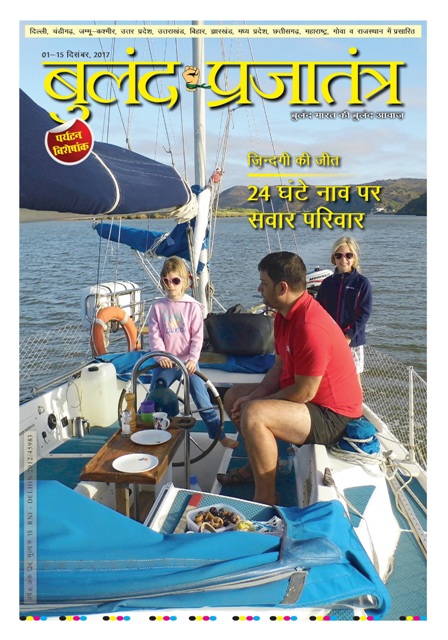I get a message on my phone from Narciso, asking if I’d like a pumpkin. I immediately reply in the affirmative and the next day Julian and the girls set off to meet Narciso at his vegetable patch. They return home with a monster – green and orange and so massive the girls can barely get their arms around it. With some difficulty, Julian slices it open, gives a third to Clare and a third to Hazel, our nearest neighbours on the pontoon that day. He keeps a third for ourselves and makes enough pumpkin soup to last us three meals and with plenty of pumpkin to spare to roast for dinner. He roasts the seeds for snacking on.
Spike appears and asks if we’d like some oranges. Yes, please, I say, and he returns to his car and brings me down two crates of big juicy oranges from the trees on his land. I give half of them away.
At school one morning, Sawa practically begs me to come and take some lemons from the tree in her garden. The tree is getting too big and they want to cut it back once all the lemons have gone. The next morning Julian takes a bagful.
When we’re down to the last four or five of Spike’s oranges, English Diana knocks on the side of the boat. She hands me a shopping bag full of oranges from the trees on her land. The next morning there’s a message on my phone from Kate, informing me that she’s left a bag of grapefruits in our dinghy. There are far too many for our meagre needs, so I share them with Clare and with Andrew, who I happen to bump into on the pontoon.
Clare knocks on the boat to ask if we’d like some coriander. Pablo, at the market, gives it away free with every purchase, and he’s given Clare too much. We love coriander and are delighted to take it.
Spanish Diana comes down to the boat. She’s been given a glut of fruit and vegetables by Luis Jose. Can I come to her house and please relieve her of some of them. I grab two shopping bags and she can barely get in her door for the bags of produce stacked outside. She gives me two massive cauliflowers, twenty or more oranges and a giant shopping bag full of spinach. I return to the boat, giving Clare one cauliflower and a quarter of the spinach as I walk past. I send Hazel a message, asking if she’d like some spinach too. She takes another quarter.
Julian forages most days and returns with chard, asparagus and alexanders. On this day, he returns home with a large bunch of asparagus. I’ve only just shared the cauliflower and spinach with Clare, and now Julian’s knocking on her boat and giving her asparagus too. ‘We’re going to have to invite more people round to dinner’, Clare laughs.
Narciso sends me another message. Do I know who has the key to the gate into the plot of land next to his vegetable patch? I don’t. The land is untended and supposedly owned by some ex-pat who doesn’t currently live here. The oranges are falling off the trees and rotting on the ground. Someone should be going in there and getting the oranges, Narciso says. I tell him I’ll try to find out whose land it is and who has the key.
That’s all happened in the last ten days. ‘The food movement’ sort of takes on a different meaning here on the Rio Guadiana!

